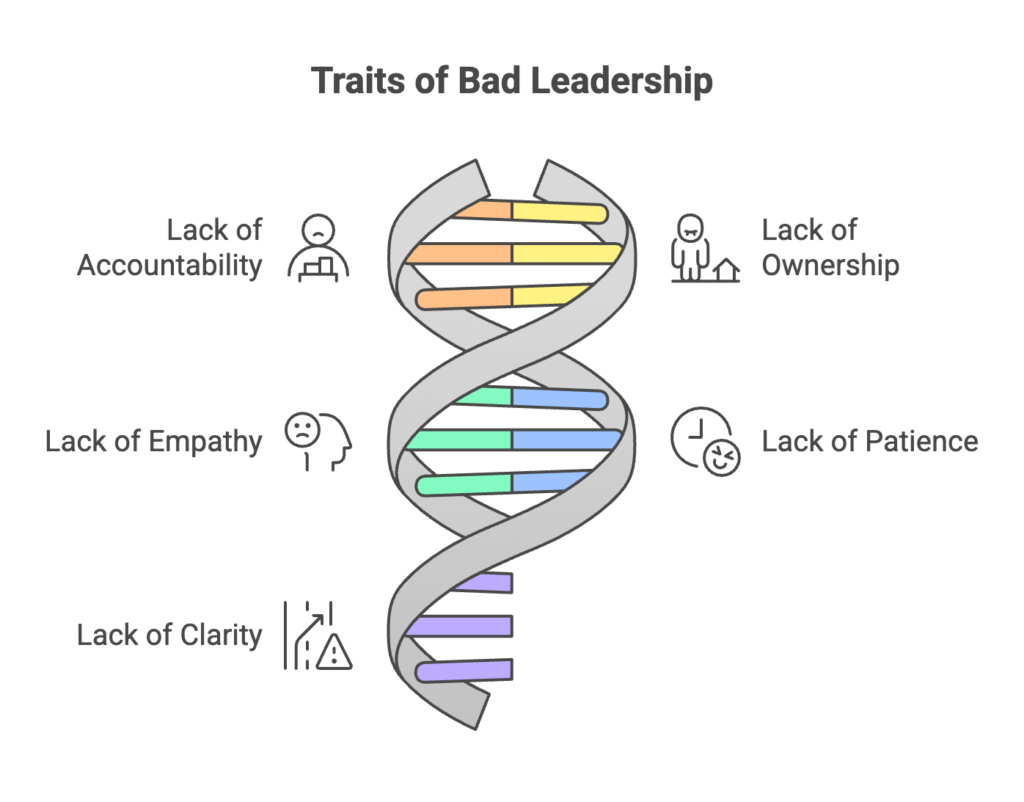A tiny seed of bad leadership can bring down even the best teams.
Over time, toxic leadership can transform an entire culture, ultimately molding teams, organizations, and even countries into mere reflections of flawed leaders.
Sounds extreme, I know; bear with me.
One of the fastest ways to become a good leader is to avoid being bad.
The Slow Poison of Bad Leadership
The detrimental dangers of bad leadership are often underrated or overlooked because their impact takes time to become apparent.
Bad leadership slowly transforms a team’s culture into a negative one.
Changing culture means changing people, and that process is slow and gradual. Over time, even the best teams can be ruined as toxic leadership shifts values and stifles potential. Good people will leave, and no good people will want to join.
Consider these common bad leadership behaviors/traits:

- Lack of Accountability: Leaders who shift responsibility to others never own up to or learn from mistakes.
- Lack of Ownership: Leaders won’t step in to help solve problems when they aren’t directly their primary responsibility or don’t involve personal credit.
- Lack of Empathy: People are seen as numbers or resources in a toxic setting. Leaders don’t recognize their employees’ feelings, ideas, career growth, fulfillment level, or well-being.
- Lack of Patience, Mindfulness, and Perspective: A leader who is constantly on edge and “on fire” creates an atmosphere of fear. Team members hesitate to approach this leader with an issue, knowing that even minor problems might trigger an overblown response.
- Lack of Clarity and Inclusion: Leaders who make unilateral decisions. Leaders who dictate, “Do everything now because I said so.”
- Lack of communication skills and Courage: Innovation and growth require honest dialogue and sometimes challenging the status quo. A leader who discourages disagreement suffocates progress.
If employees are forced to say “yes” to everything, regardless of feasibility, the organization will miss opportunities for improvement and true innovation.
- Always Complaining and Negative: Leaders who complain out loud to their teams, especially in the face of adversity, and dwell on problems will drain their morale and demotivate their teams.
- Takes Things Personally: A leader who takes criticism as a personal attack can suppress open dialogue and honest conversations.
The Universal Paradigm
Interestingly, this toxic leadership model applies to more than just the corporate world. Replace “leader” with “parent,” “president,” “king,” or “teacher,” and the same paradigm applies.
The only significant difference is mobility: while in a corporation, you might switch teams or companies, citizens, children, or students are often stuck with the system.
Conclusion
The adverse effects of bad leadership are subtle yet profound. When leaders fail to admit their mistakes, show empathy, or foster open dialogue, the consequences ripple far beyond the team.
Recognizing these traits can help you work to challenge and change toxic environments—whether at work, home, or school. Leadership matters in every sphere.
Thank you for reading!
